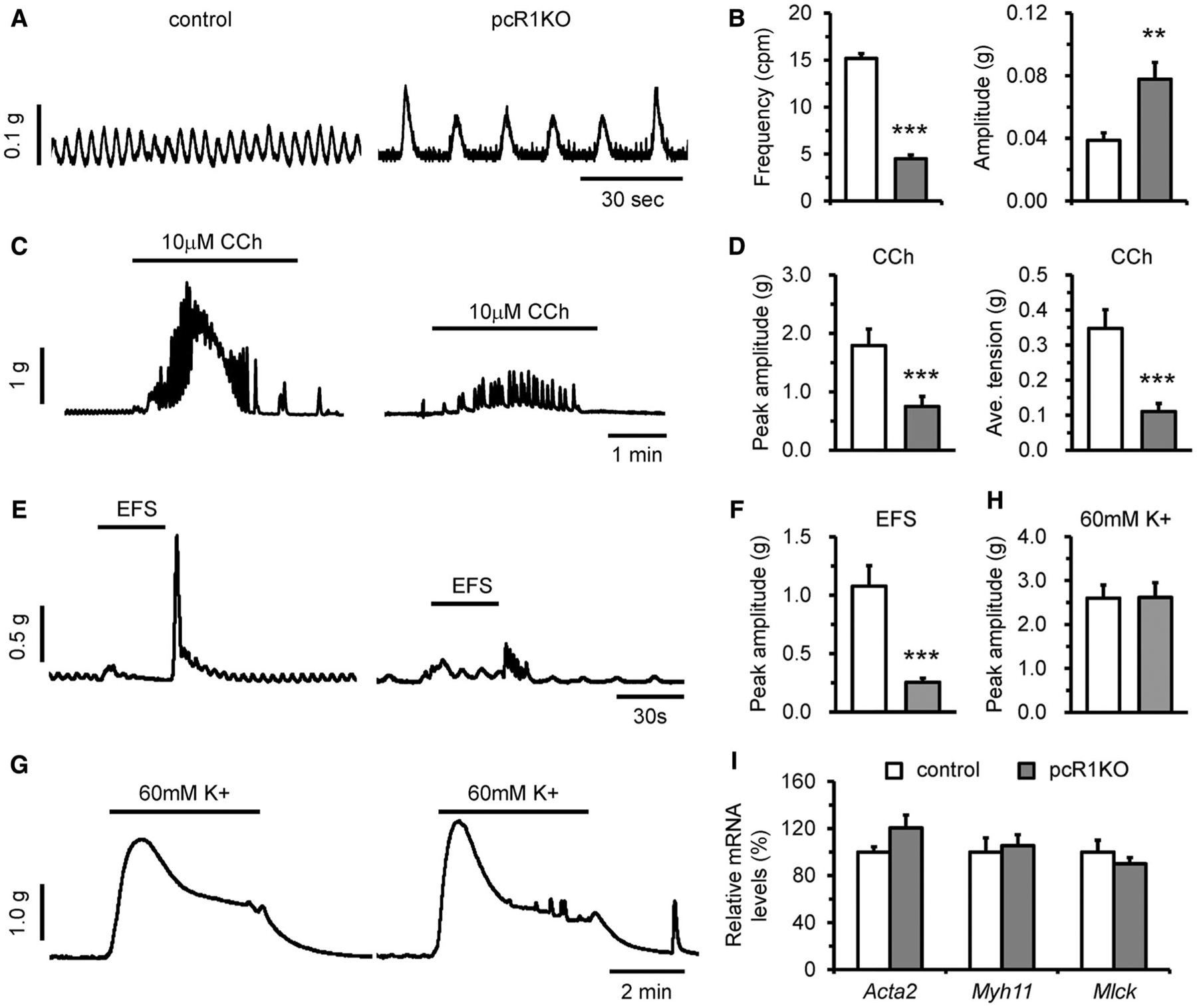Fig. 4.

Deletion of IP3R1 caused defects in colonic circular muscle contractility. The colons were isolated from 1-month-old control and pcR1KO mice, respectively. Muscle strips with mucosa were suspended in the circular direction, and contractility was measured using isometric tension recording. a Representative spontaneous contractions in colonic segments from control and pcR1KO mice. b Statistical analysis showing that the frequency of spontaneous contractions was dramatically reduced, whereas the amplitude was increased in pcR1KO colons; n = 19–20 muscle strips per group. c Representative recordings of contraction induced by 10 μm carbachol (CCh). d Quantitative analysis of peak amplitude and averaged tension showing contraction induced by CCh in pcR1KO colons was significantly reduced; n = 19–20 muscle strips per group. e Representative recordings of contraction induced by electrical field stimulation (EFS). f Quantitative analysis of peak amplitude demonstrating contractions induced by EFS in pcR1KO colons was significantly reduced; n = 17–18 muscle strips per group. g Representative recordings of contraction induced by 60 mM KCl (K +). h Quantitative analysis of peak amplitudes in control and pcR1KO colons; n = 18 muscle strips per group. i Quantitative RT-PCR analysis of the expression of Acta2, Myh11, and Mlck in control and pcR1KO colonic muscles; n = 4 mice per group. For all data significance was determined using a 2-tailed, unpaired Student’s t test. **P < 0.01, ***P < 0.001 versus control. Error bars represent mean ± SEM
